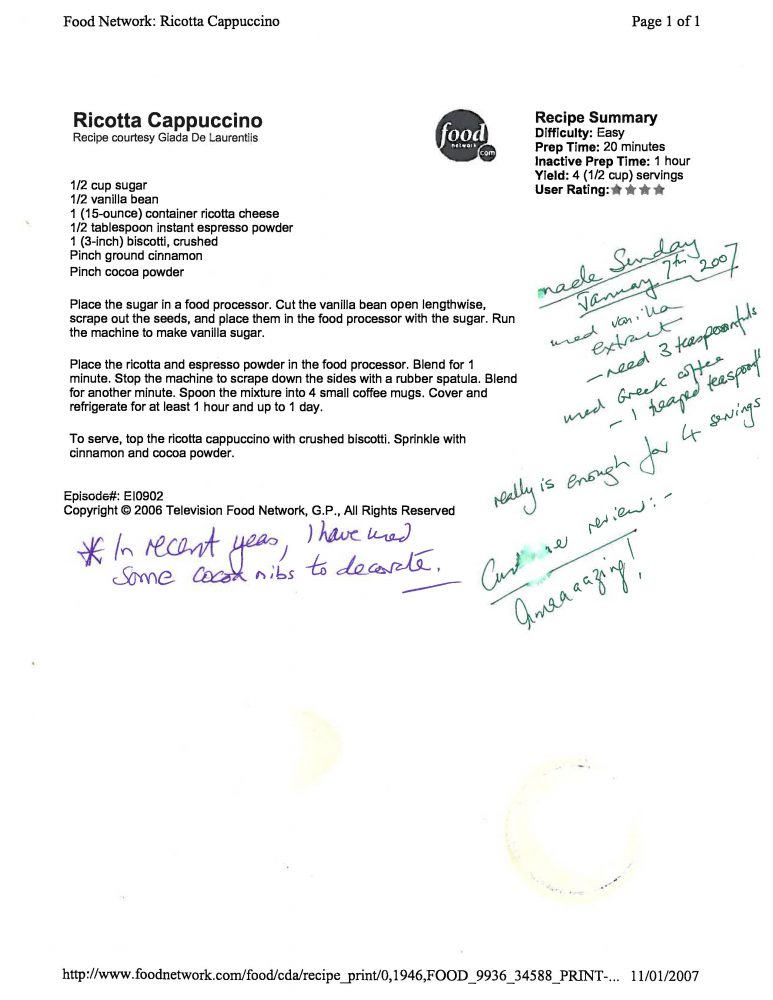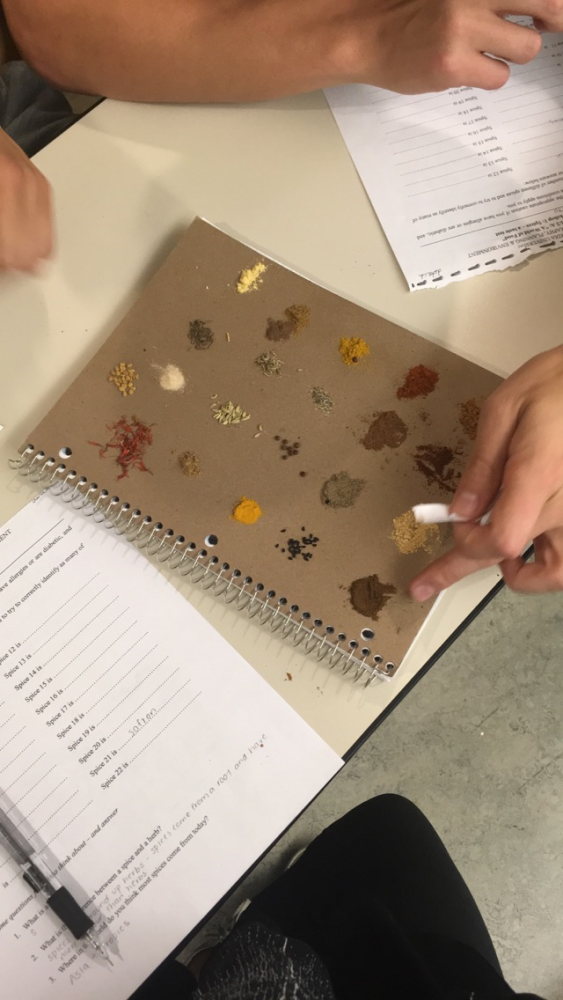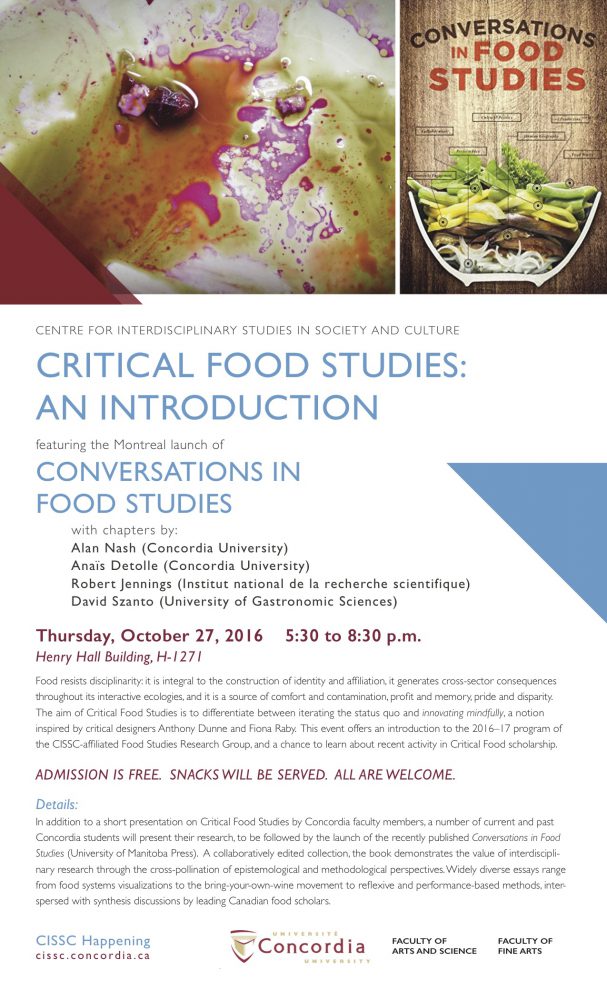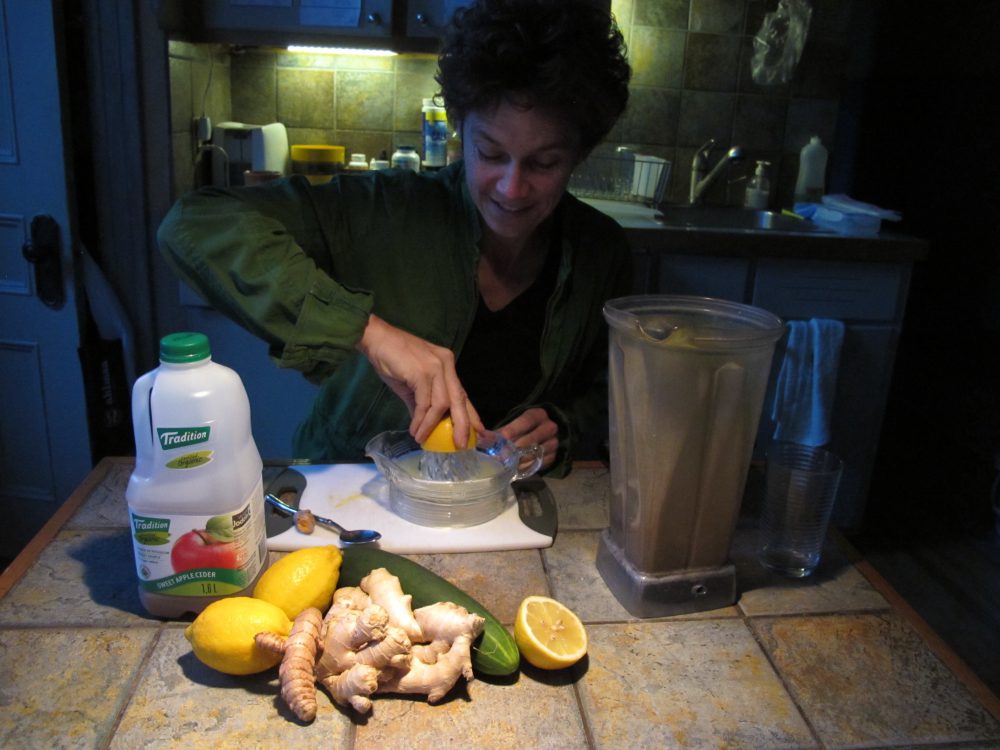The Concordia Food Studies community includes faculty members, as well as a number of graduate students, spanning the faculties of Arts and Sciences, Fine Arts, Computer Science and Engineering, and the John Molson School of Business.
Meet Concordia’s Food Studies People!
Click on the + sign on the professors’ photos to see their profiles.
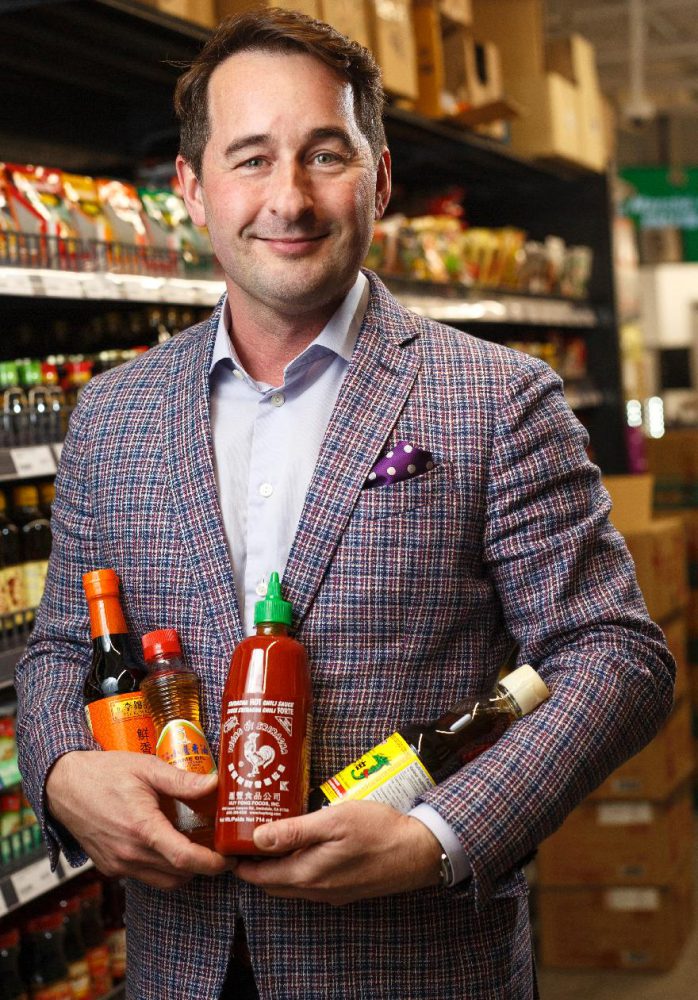
Professor, Marketing
3M National Teaching Fellow
Dr. Jordan L. LeBel received his MSc from Cornell University and his PhD from McGill University and joined Concordia University in 2000. He teaches MARK 458: The Marketing of Food, as well as MBA 644: Marketing Management. He previously headed the Executive MBA program as well as the Luc Beauregard Centre of Excellence in Communications Research. He has developed many successful and award-winning courses including the MBA elective course “Experience Design and Marketing” and the online course “Marketing Yourself” taken by over 20,000 between 2004 and 2017. He is the recipient of the 2005 and 2010 best teacher award in the John Molson School of Business, the 2011 President’s Excellence in Teaching Award, the 2011 MBA Professor of the Year award and the 3M National Teaching Fellowship.
His research focuses on hedonic and aesthetic consumption, especially as it relates to the definition of pleasure, its various dimensions, and its impact on decision making and behaviour in the areas of food choices and healthy eating and lifestyles. He has presented his work at various conferences such as Advances in Consumer Research, Marketing Science, The Pangborn Sensory Science Symposium, and the Canadian Institute of Food Technology. His research on comfort foods, and particularly chocolate, has been featured extensively in both broadcast and print media around the world. He is a regular commentator on food and restaurant marketing issues in the local and national media. Dr. LeBel actively supervises graduate students at the MSc and PhD levels. He is a founding member of the Concordia Food Culture Research Group. He regularly consults for large and small organizations in the food, foodservice, and retail industries. He has given keynote addresses to a variety of organizations such as C2MTL, the World Congress of Food Scientists, the Ordre professionnel des diététistes du Québec, and the Canadian Foodservice Professionals Association.
Dr. LeBel started his career in professional kitchens at the age of 12 and has been a chef and a restaurant reviewer. He has taught at the School of Hotel Administration at Cornell University and lectured at the École Hôtlière de Lausanne in Switzerland. His vintage cookbook collection goes back to 1742. Dr. LeBel is actively involved in various charities and non-profit organizations. He has been a member of the board of directors of YES Montreal, the Quebec Society of Public Relations Professionals, and Croquarium. He currently sits on the Scientific Committee for the Prevention of Obesity at the Institut national de santé publique.
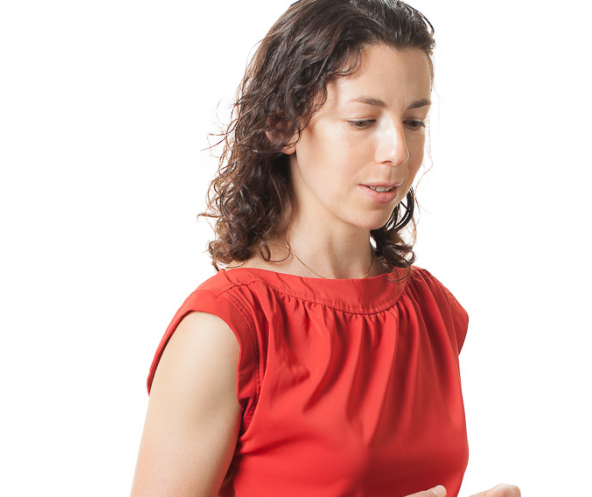
Associate Professor, History
In my second book project, I am investigating the political economy of food and the early food sciences. Fodder for Empire: Feeding People Like Other Animals examines the history of experiments with producing cheap, high-calorie food after the mid-eighteenth century, when the unprecedented expansion of Britain’s colonial territories intensified the problem of food security, particularly for provisioning the working subjects and animals of the empire. I am especially interested in drawing on insights from animal history for making sense of why and how numerous eighteenth- and early-nineteenth-century reformers in North America and Europe routinely proposed feeding people of lowly status—vagrants, paupers, prisoners, sailors, soldiers, the physically or mentally disabled, and orphans—just as planters fed their slaves and provided fodder for their livestock.
Besides History 394: Food in History, which focuses on understanding the emergence and increasingly pervasive influence of the American model of food production and consumption patterns, in History 395: Environment History, I teach about the geographical origins and commercialization of edible plants and domesticated animals raised for meat and milk in the sixteenth through eighteenth centuries, as well as the ecological consequences of their eventual globalization.
![]()
Photo from Jeremy Bentham’s recommendations from the 1790s for what to feed criminals and paupers in British prisons and poorhouses
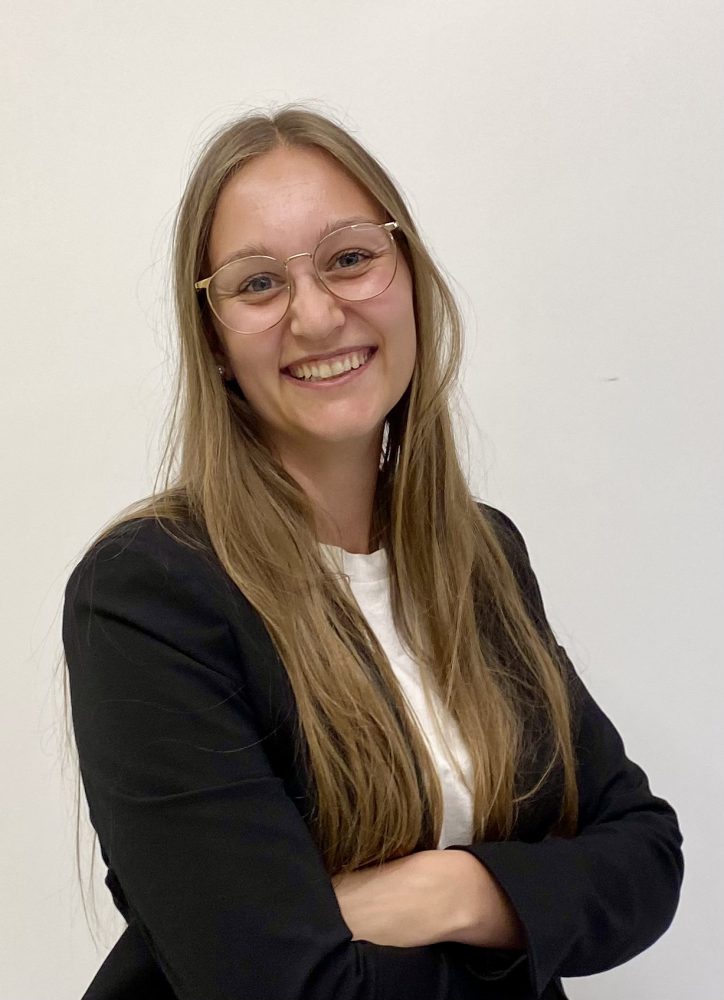
PhD candidate, INDI program (food studies)
Marie-Ève is a student in the PhD INDI program at Concordia University. Her background in communication and marketing encouraged her to combine three disciplines for her doctoral studies which are administration (food studies), visual arts, and communications. Her research aims to study what is the effect of convenience (UberEats, meals in a box, etc.) of the attributes of food such as the pleasures of eating, buying local, the effect on producers and farmers, etc.
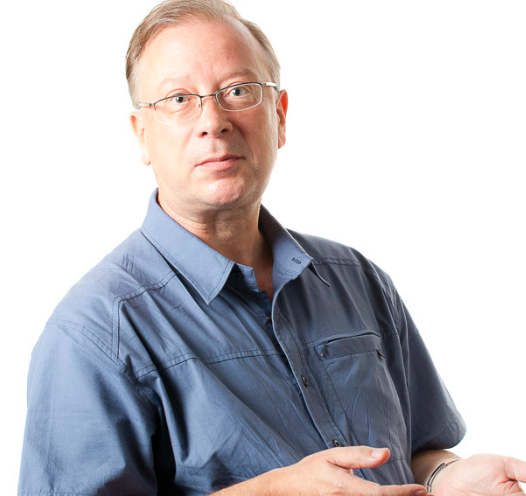
Professor, Geography, Planning and Environment
My research focusses on restaurants in Montreal. As a cultural geographer (with an interest in how different ideas of “place” shape our lives), I have examined the city’s evolving restaurant scene reflects patterns of immigration immigration various ideas of “place” – whether it be the city where we live, or (if we are from where we come from – and how they affect our notions of public and private space.
This academic year (2016-17), I am teaching GEOG 321 (“A World of Food”) and GEOG 473 (“Environment and Heath”). Sadly, I am not teaching any other food-related courses this year!
Publications
Nash, A. (2017: forthcoming). “Breach, Bridgehead or Trojan Horse? An Exploration of the role of food trucks in Montreal’s changing foodscape”. (In) From Loncheros to Lobsta Love: Food Trucks, Cultural Identity, and Social Justice. Agyeman, Julian, Caitlin Matthews and Hannah Sobel (eds) MIT Press (Boston)
Detolle, A., Jennings, R. and Nash, A. (2016). “The Bottle at the Centre of a Changing Foodscape: “Bring Your Own Wine” in the Plateau-Mont-Royal, Montreal”. (In) Anderson, C.R., Brady, J., and Levkoe, C.Z. (eds.), Conversations in Food Studies. University of Manitoba Press (Winnipeg), 148-167.
Nash, A. (2016). “Green Restaurants”, in P.B. Thompson and D.M. Kaplan (eds.) The Encyclopedia of Food and Agricultural Ethics, Second Edition (Dodrecht: Springer 2016) Online: DOI 10.1007/978-94-007-6167-4_584.1
Nash, A. (2011). “Smoke and Mirrors: Montreal’s Smoked Meat”. In The Oxford Symposium on Food and Cookery: Fermented, Smoked and Preserved Foods, edited by Helen Saberi (Devon UK: Prospect Books)
Nash. A. (2010). “The Impact of Restaurant Delivery on Montreal’s Domestic Foodscapes, 1951-2009”, Material Culture Review vol. 70, pp. 43-53.
Nash, A. (2009). ““From Spaghetti to Sushi”: An Investigation of the Growth of Ethnic Restaurants in Montreal, 1951-2001”, Food, Culture and Society vol. 12(1), pp 5-24.
Photos from spice tasting competition is GEOG 321
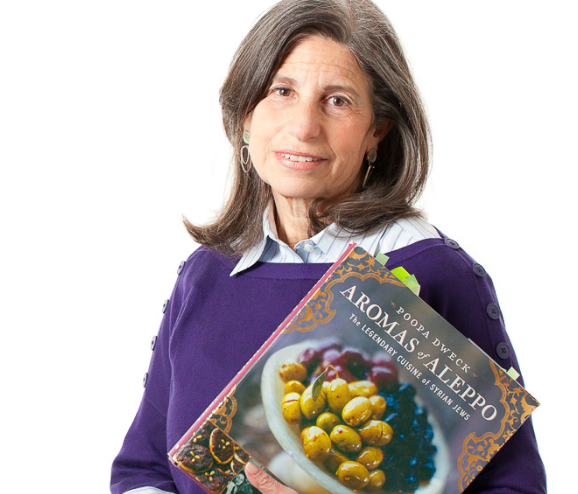
Professor, Religion
I explore ethnic and religious community foodways as a means of locating communal identity, ritual practices, and social relationships.
My particular focus is a small community of Iraqi Jews in Montreal.
Beginning in the 1950’s over three hundred Jewish families from Iraq found their way to Montreal, Canada. This group of educated, mostly prosperous, English speaking immigrants managed to integrate quite smoothly into the socio-economic structure of Quebec. They also managed to maintain a very strong and coherent communal definition. Amidst an overwhelming Ashkenazi Jewish community and a growing Moroccan one, their struggle to maintain a unique Jewish identity raises many issues and locates diverse tactics.
My current work focuses on culinary and commensal practices as vehicles of ethnic distinction, continuity and innovation.
Arrival in Montreal created problems of isolation and assimilation. In their attempts to sustain and reconstruct their family patterns in a new country, Iraqi food became a central element of interaction, expertise and identity. New family traditions were slowly established such as Friday night Sabbath family dinners replacing the Baghdadi Saturday afternoon meal. Communal coherence shifted to informal dinners and ceremonial festivities. The people formed the Community of Babylonian Jews and associated with an Orthodox synagogue. Though no longer necessarily practicing all the rituals of their past, they were devoted to continuity and preservation. They were proud of their Iraqi heritage and customs but were struggling to find a new world pattern that would help them sustain their distinctiveness.
Food retained its place in their patterns of socialization and innovations aided the retention of a heritage.
Investigating the lives of Iraqi Jewish women in Montreal, led me to food as it appeared to be a uniquely suitable access to their experiences in Baghdad as well as in Canada. After a number of years, numerous interviews, group discussions, and ceremonial feasts, the study indicated that the men and women relate to each other, to their environment, and to their traditions via food. Surpassing stereotypical images, I found that while women are the primary food givers, Iraqi men were also involved in food preparation in their new home. For me food study became a principal site for the interrogation of the continuity and transformation of an immigrant community.
Food is not merely what you do while you are celebrating or worshiping. It is at the ritual core of our ceremonies, even of our religious and national traditions. Food defines and reflects much of a community’s self-understanding and experience.
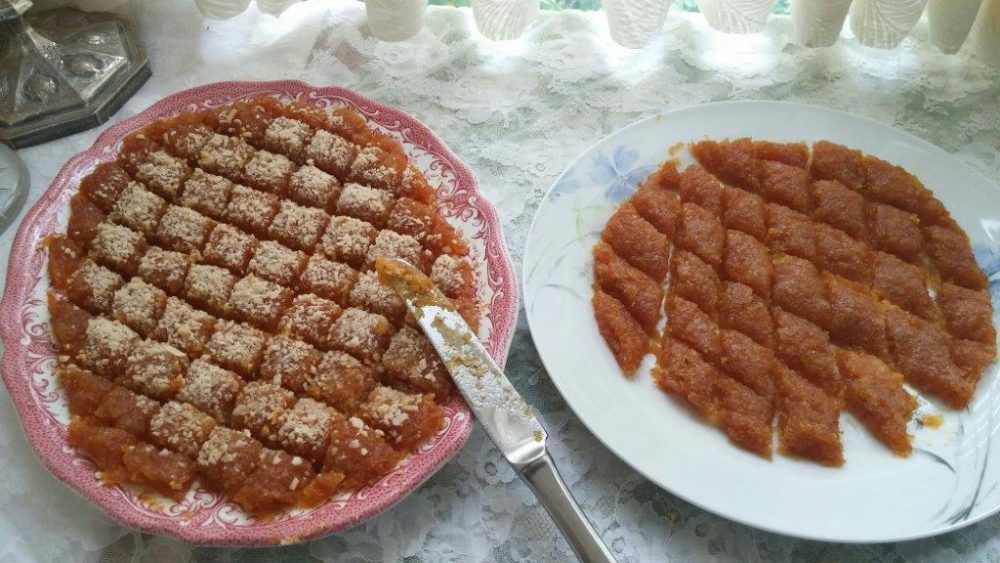
This is a picture with recipe of an Iraqi favoured desert known as orange Luzina.
Her food-related publications include:
This new chapter on Iraqi food to be published by MQUP
Edited volumes
(2002) Guest editor. Special edition of Nashim, “Feeding an Identity: Gender, Food, and Survival.” Vol. 5, Summer. R
Chapters in books, encyclopedia articles, journal articles
(forthcoming) “Cookbooks are our Texts: reading an immigrant community through their cookbooks.” Ann Valleley, editor, special edition on food in Religious Studies and Theology.
(forthcoming) “Food, Gift, Women Gift-Givers: A Taste of Jewishness.” Women and the Gift: Volume 1 and 2. Ed. Morny Joy. (Springer ) 2016.
(forthcoming) “T’beet: Situating Iraqi Jewish Identity through Food.” McGill-Queens University Press, Religious Lives and Landscapes in Quebec, editor, Hillary Kael. 2016.
(2013) “Embodied Religion, Embodied Teaching: Team Teaching “Food and Religion.”” Religious Studies News, AAR. Editor, Sarah Levine. Available on-line [Norma Baumel Joseph and Leslie C. Orr].
(2011) “From Baghdad to Montreal: Food, Gender & Identity.” Migration, Communication & Home: Jewish Tradition, Change & Gender in a Global World. Ed. Tanya Reyton-Marinchesshka. Sofia: LIK Publishing House. 92–104.
(2009) “Food for the Body and Soul: Women’s Blessings.” Blessings. Ed. Loren Lerner. Canadian Jewish Studies Chapbook Series, No. 5. Montreal: Institute for Canadian Jewish Studies. 53–58.
In preparation
(2016) “Sambusak Sundays: Iraqi Jewish Women in Montreal,” in Religion and Women in Diaspora: Canadian Experiences, Edited by Sailaja Krishnamurti, Becky Lee, Terry Tak-ling Woo .
Documentary presentations (film and DVD)
(2012) Ashtideq!, a film collage of interviews of Iraqi Jewish families and their food practices. SSHRC research product (Norma Joseph primary researcher and interviewer).
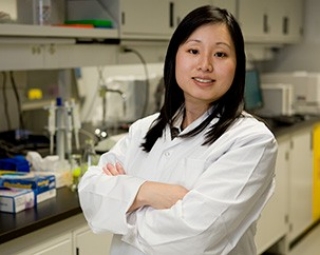
Associate Professor, Exercise Science
Dr. Santosa is an Associate Professor in the Department of Exercise Science at Concordia University and a Tier II Canada Research Chair in Clinical Nutrition. Dr. Santosa joined the Department of Exercise Science in January of 2011 following a 3.5 year research fellowship at the Mayo Clinic in Rochester, MN. She earned her Ph.D. in Nutritional Sciences from McGill University and completed her dietetic internship at the McGill University Health Centers. Dr. Santosa is a registered dietitian through her membership in the College of Dietitians of Ontario.
Obesity—both on an individual and a societal level—is a concern for millions of Canadians. Despite existing public policy and weight loss treatments, more Canadians are clinically overweight than are not.
At the same time, health research has yet to fully understand exactly how obesity affects the progression or treatment of people suffering from weight-related diseases such as cardiovascular disease and diabetes. Obesity treatments themselves remain largely ineffective, as most people who lose weight eventually gain it back.
Dr. Sylvia Santosa studies the metabolic and cellular mechanisms surrounding how diseases develop among the overweight—and why not all obese people develop weight-related illnesses. Her multidisciplinary research integrates elements from biology, physiology and nutritional science to study the effects of obesity that contribute to weight gain and disease.
Dr. Santosa’s research will identify the long-term effects of obesity, from cells to the entire human body. The results of her work will help in developing better public health interventions, from disease prevention to weight management.
Her food-related publications include:
1. Murphy J, Moullec G, Santosa S. Factors associated with adipocyte size reduction after weight loss interventions for overweight and obesity: a systemic review and meta-regression. Metabolism. 2016: revision requested.
2. Santosa S, Bonnes S, Jensen MD. Acute female hypogonadism alters adipose tissue fatty acid storage factors and chylomicronemia. Journal of Clinical Endocrinology and Metabolism. 2016:101;2089-98.
3. Yang SQ, DeGuire JR, Agellon S, Lavery P, Mak I, Weiler HA, Santosa S§. Conjugated linoleic acid mitigates testosterone-related changes in body composition in male guinea pigs. Nutrition Research. 2016:36;408-17.
4. Dam V, Sikder T, Santosa S§. From Neutrophils to Macrophages: Differences in Regional Adipose Tissue Depots. Obesity Reviews. 2016:17;1-17.
5. Santosa S§, Jensen MD. The sexual dimorphism of lipid kinetics in humans. Frontiers in Endocrinology. 2015: 6:103 (6 pages).
6. Hames KC, Koutsari C, Santosa S, Bush NC, Jensen MD. Adipose tissue fatty acid storage factors: effects of depot, sex and fat cell size. International Journal of Obesity. 2015:39;884-7.
7. Varady KA*, Dam V*, Horne M, Cruz R, Klempel MC, Kroeger CM, Santosa S§. Effects of weight loss via high fat vs low fat alternate day fasting diets on free fatty acid profiles. Scientific Reports. 2015:5;7561 (6 pages).
8. Santosa S, Swain J, Tchkonia T, Kirkland JL, Jensen MD. Inflammatory characteristics of adipose tissue collected by surgical excision vs. needle aspiration. International Journal of Obesity. 2015:39;874-6.
9. Santosa S§, Jensen MD. Sex and sex steroids: impact on the kinetics of fatty acids underlying body shape. Hormone Molecular Biology and Clinical Investigation. 2014:20;15-23.
10. Du S, Rajjo T, Santosa S, Jensen MD. The thermic effect of food is reduced in older adults. Hormone and Metabolic Research. 2014:46;365-9.
11. Santosa S, Jensen MD. Adipocyte Fatty Acid Storage Factors Enhance Subcutaneous Fat Storage in Postmenopausal Women. Diabetes. 2013:62;775-82.
12. Santosa S, Jensen MD. Effect of Male Hypogonadism on Regional Adipose Tissue Fatty Acid Storage and Lipogenic Proteins. Public Library of Science One. 2012:7;e31473 (10 pages).
13. Santosa S, Khosla S, McCready L, Jensen MD. Effects of estrogen and testosterone on resting energy expenditure in older men. Obesity. 2010:18;2392-4.
14. Barrow CJ, Nolan C, McCleod M, Santosa S, Holub BJ. Bioequivalence of encapsulated and microencapsulated fish-oil supplementation. Journal of Functional Foods. 2009:1;38-43.
15. Kassis AN, Santosa S, Jones PJH. Potential health claims on dietary fiber: How robust is the evidence? International Journal of Naturopathic Medicine. 2009:4;28-32.
16. Santosa S, Hensrud DD, Votruba SB, Jensen MD. The influence of sex and obesity phenotype on meal fatty acid metabolism before and after weight loss. American Journal of Clinical Nutrition. 2008:88;1134-41.
17. Santosa S, Jensen MD. Why are we shaped differently and why does it matter?. American Journal of Physiology, Endocrinology and Metabolism. 2008: 295;E531-5.
18. Santosa S, Demonty I, Lichtenstein AH, Jones PJH. Moderate weight loss: A self-directed protocol for women. Canadian Journal of Dietetic Practice and Research. 2008: 69;23-27.
19. Santosa S, Demonty I, Lichtenstein AH, Ordovas JM, Jones PJH. Single nucleotide polymorphisms in ABCG5 and ABCG8 are associated with changes in cholesterol metabolism during weight loss. Journal of Lipid Research. 2007:48;2607-2613.
20. Santosa S, Demonty I, Lichtenstein AH, Cianflone K, Jones PJH. An investigation of hormone and lipid associations after weight loss in women. Journal of the American College of Nutrition. 2007:26;250-258.
21. Santosa S, Demonty I, Lichtenstein AH, Jones PJH. Cholesterol metabolism and body composition in women : the effects of moderate weight loss. International Journal of Obesity. 2007:31;933-941.
22. Varady KA, Santosa S, Demonty I, Jones PJH. Validation of hand-held bioelectrical impedance analysis with magnetic resonance imaging for the assessment of body composition in overweight women. American Journal of Human Biology. 2007:19;429-433.
23. Santosa S, Varady KA, AbumWeis S, Jones PJH. Physiological and therapeutic factors affecting cholesterol metabolism: does a reciprocal relationship between cholesterol absorption and synthesis really exist?. Life Science. 2007:80;505-514.
24. Varady KA, Charest A, Santosa S, Demonty I, Lamarche B, Jones PJ. Effect of weight loss resulting from a combined low-fat diet/exercise regimen on low-density lipoprotein particle size and distribution in obese women. Metabolism. 2006:55;1302-1307.
25. Santosa S, Farnworth E, Jones PJH. Probiotics and their potential health claims. Nutrition Reviews. 2006:64;265-274.
26. Santosa S, Jones PJH. Health benefits of consumption of fish oil omega-3 fatty acids. International Journal of Naturopathic Medicine. 2006.
27. Santosa S, Jones PJH. Oxidative stress in ocular disease: does lutein play a protective role?. Canadian Medical Association Journal. 2005:173;861-862.
28. Santosa S, Farnworth E, Jones PJH. Probiotics: Health benefits to the gut. International Journal of Naturopathic Medicine. 2004.
29. Santosa S, AbuMweis S, Jones PJH. Plant sterols: Evidence to support a health claim. International Journal of Naturopathic Medicine. 2004.

Associate Professor, Sociology and Anthropology
Dr. Ikeda studies the political sociology of global futures, sustainable agriculture, and Japan and East Asia using the method of Polanyi-Hopkins historical sociology informed by the world-system perspective. Development and international economics inform his study on the global structure of accumulation and governance. His study seeks alternatives to neoliberal globalization that are sustainable ecologically, socially, and economically.
Together with a group of like-minded students, Dr. Ikeda is engaging in the Transition Project. This projects looks into the social economies as possible alternatives to the dysfunctional and unsustainable corporate economy. Those who initiated and practice social economies are video interviewed to reveal their ‘transition moments’ from individualistic and materialistic mentality to collective and sustainable mindset. The project team is working to create video clips to share inspiring stories of ‘transition’ for wider public.
He tells us “My area of interest is creating post-corporate futures with social economy particularly in food-related areas.”
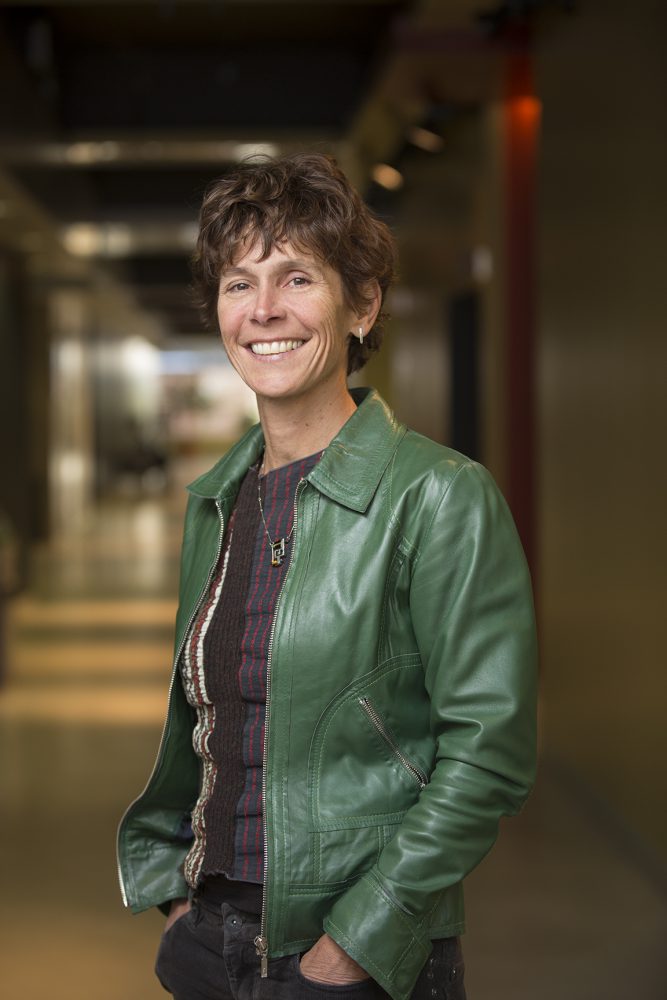
Professor, Communication Studies
As a documentary maker and educator I am interested in the combined power of media and food to instigate creative encounters. For the last fifteen years I have been making films about environmental justice that address issues including water privatization, sea-level rise, and climate migration.
A recipe for a signature dish made by you: Morning shot before class
Fresh Lemon, Tumeric, ginger, apple cider, cucumber or kale
PUBLICATIONS FOR ELIZABETH MILLER:
Co-authored book
High, Steve & Miller, Liz & Ted Little. Going Public: Oral History, Documentary, and Theatre. University of British Columbia Press
Chapter Miller, L. Rethinking Engagement: Community Media in an Age of Expanded Documentary, in Going Public: Oral History, Documentary, and Theatre, University of British Columbia Press (in progress)
Chapter Miller, L. En la casa: A gendered oppositional strategy for feminist engagement, Palgrave, in Going Public: Oral History, Documentary, and Theatre, University of British Columbia Press ( in progress).
Miller, L. and Marty Allor, Choreographies of Collaboration: Social Engagement in Interactive Documentaries, Studies in Documentary Film, Vol. 10, Issue 1, p. 53-70.
Luchs, M. and Miller, E. (2015), Not so far away: a collaborative model of engaging refugee youth in the outreach of their digital stories. Area. doi:10.1111/area.12165
Chapter Miller, L and Michele Luchs, (2015) “On Tour with Mapping Memories: Sharing Refugee Youth Stories in Montreal Classrooms.” Beyond Testimony and Trauma: Oral History in the Aftermath of Mass Violence, University of British Columbia Press, , p. 235-253
Chapter Miller, L. (2013). “Going Places: Helping Youth with Refugee Experiences Take Their Stories Public.” Oral History Off the Record: Toward an Ethnography of Practice, Anna Sheftel, Stacey Zembrzycki, eds. NY: Palgrave Macmillan, 2013, p. 113 -127.
Chapter Miller L. and Michele Luchs (2013). “Arrival Stories: Using Media to Create Connections in a Refugee Residence”. Remembering Mass Violence: Oral History, New Media and Performance, Steven High, Edward Little and Thi Ry Duong (eds.), Toronto, University of Toronto Press, p. 184-200.
Chapter Miller, L. & Michele Smith (2012 )“Dissemination and Ownership of Knowledge” in Handbook of Participatory Video AltaMira Press, August, p. 331-348
Journal Miller, L. (2010) “Queer is In the Eye of the Newcomer: Mapping Performances of Place” InTensions, Issue 4.0 Fall.
Chapter Miller, L. (2009) Filmmaker in Residence: The Digital Grandchild of Challenge for Change. In Waugh, T. (Ed). Challenge For Change / Societe Nouvelle (McGill University Press) p. 427-442.
Journal Miller, L. “Building Participation in the Outreach for “The Water Front” film,” Journal of Canadian Studies, special edition, Sharing Authority: Community-University Collaboration in Oral History, Digital Storytelling, and Engaged Scholarship, Vol. 43, No. 1, Winter,2009, p. 59-86.
WEB PRODUCTIONS:
http://www.theshorelineproject.org/

Part-Time Professor
My name is Erik Chevrier. I am an accomplished professor, researcher and social activist. I am a part-time professor at Concordia University and Dawson College. I am also pursuing a multidisciplinary PhD in Humanities via the Center for Interdisciplinary Studies in Society and Culture at Concordia University.
I am interested in facilitating the development of a cooperative, socially responsible, environmentally sustainable, sovereign and secure food system at Concordia University. My research is focused on the student-run food groups at Concordia because these groups are challenging the dominant ideology of how food is produced, processed and distributed. Concordia students are pioneers of ‘alternative’ food practices; they provide concrete examples of how to develop healthy food systems. I am building an online archive (www.concordiafoodgroups.ca) to preserve the institutional memory of these groups and to highlight the activities of the people who are leading the food movement at Concordia.
Food Related Screenings and Presentations
Film Screenings:
Short documentary “The Hive” presented at Beyond capitalism? Toward
economic self-determination of communities, Concordia University (2016).
Presentations:
•Chevrier E. (Host and Moderator) (2016) Food Systems Panel: How the Food System Affects Everyone, at Bite Me!, Concordia University.
•Chevrier E. (Keynote Speaker) (2016) Building a better food system at
Concordia University, Presented at Concordia Transitions; Building a
Food-System for Students by Students from Farm to Plate , Concordia
University.
•Chevrier E. (Keynote Speaker) (2016) The Food System at Concordia University,
Presented at Bite Me!, Concordia University.
•Chevrier E. (Guest Speaker) (2015) History of the Food Movement at
Concordia University, Presented at Concordia Transitions; Building a
Food-System for Students by Students from Farm to Plate , Concordia
University.
•Chevrier E. (Guest Speaker) (2015) Building a Better Food System at
Concordia University, Presented at Integrated; An Interdisciplinary,
Undergraduate Symposium on Sustainability in Higher Education,
Concordia University.
Visit Erik’s website here: www.erikchevrier.ca
Visit the Concordia Food Groups Archive here: www.concordiafoodgroups.ca
Visit the Edible Activism! project about the food groups at Dawson College here: www.dawsonfoodgroups.ca
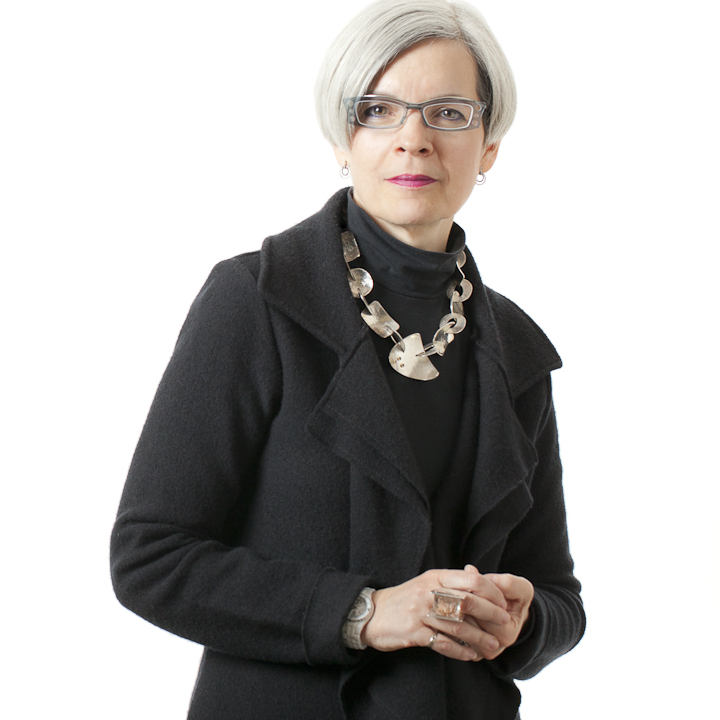
Professor, Design and Computation Arts
Rhona Richman Kenneally is a Professor and former Chair of the Department of Design and Computation Arts at Concordia, and a Fellow of the School of Canadian Irish Studies. She is also Editor of the Canadian Journal of Irish Studies. She has degrees in literature and Canadian social history, as well as a professional degree and PhD in architecture. She is the organizer of the Food Studies Research Team under the umbrella of the Centre for Interdisciplinary Studies in Society and Culture, and is a participating faculty member in both the Irish Studies and Food Studies Research Currents of the Individualized MA and PhD programs (INDI, formerly known as SIP).
Rhona’s research brings together the domains of food studies, food design, sustainable design practice, and the architecture and design of the built environment, to explore food-related agency and performance. Her food-related lectures, publications, and teaching address several areas of investigation. Some explore the implications that remembered domestic “foodscapes” of one’s childhood have on subsequent food-related engagement, and have inspired design prototypes that implicate children more directly in daily home food practices. She has considered ways in which food has determined national and cultural affiliation in Canada and in Ireland. This work has also informed projects undertaken with her undergraduate and graduate students to engage with concepts of emotional, and “speculative” design to promote ethical and enriching food experiences. She is writing a book, based on her SSHRC-funded research, that explores the impact of new food-related technologies (such as electrification) in mid-20th-century Irish domestic space. In addition, she is co-editing, with Máirtín Mac Con Iomaire (School of Culinary Arts and Food Technology, Dublin Institute of Technology) a special issue on Food Studies of the Canadian Journal of Irish Studies. She has recently served as a keynote speaker or given lectures or conference presentations in Canada, Ireland, Italy, Spain, and the US.
Rhona has organized and co-organized food studies conferences and symposia at Concordia, including, with Jordan LeBel (Dept. of Marketing, Concordia; Director of the Luc Beauregard Centre of Excellence in Communications Research), Domestic Foodscapes: Towards Mindful Eating?. She has obtained funding from the Centre for Interdisciplinary Studies in Society and Culture for a series of workshops and lectures entitled Critical Food Studies, co-organized with Norma Joseph (Religion) and Alan Nash (Geography, Planning, and Environment). These will be held through the 2016-2017 academic year.
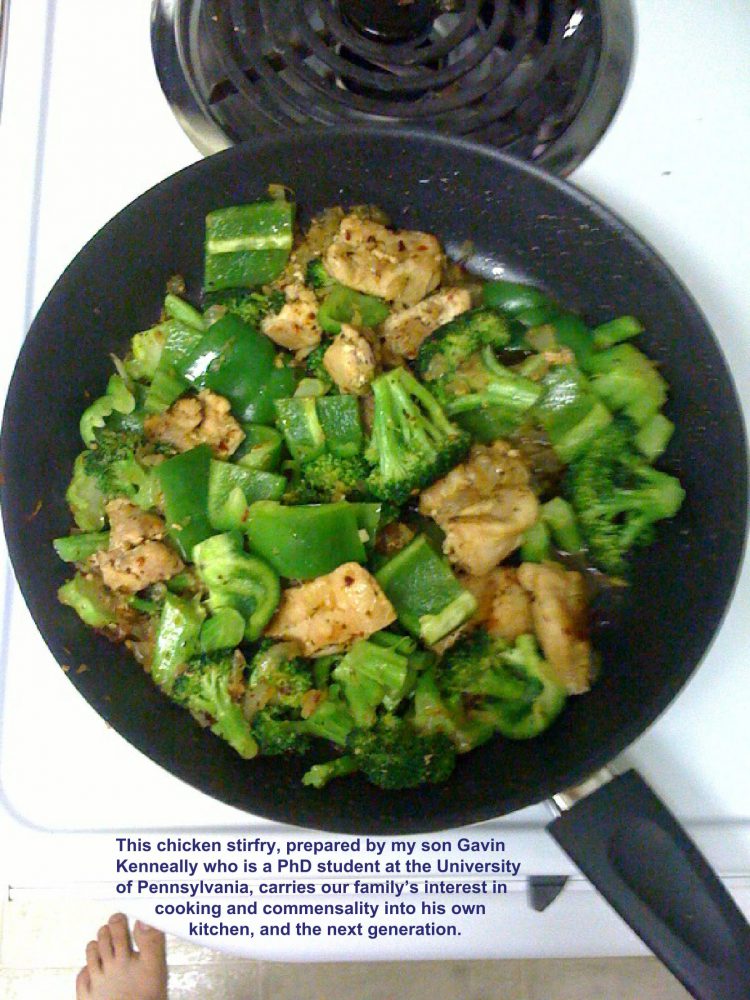
Her food-related publications include:
“The Elusive Landscape of History: Food and Empowerment in Sebastian Barry’s ‘Annie Dunne.’” In “Tickling the Palate”: Gastronomy in Irish Literature and Culture, edited by Máirtín Mac Con Iomaire and Eamon Maher, 79–98. New York, NY: Peter Lang International Academic Publishers, 2014.
“Tastes of Home in Mid-Twentieth-Century Ireland: Food, Design, and the Refrigerator.” Food and Foodways 23 (2015): 1–24.
“Towards a New Domestic Architecture: Homes, Kitchens and Food in Rural Ireland during the Long 1950s.” In Food and Drink in Ireland, edited by Elizabeth FitzPatrick and James Kelly, 325–47. Royal Irish Academy, 2015. http://www.jstor.org/stable/10.3318/priac.2015.115.12.
“Memory as Food Performance: The Cookbooks of Maura Laverty.” In Ireland and Quebec: Multidisciplinary Perspectives on History, Culture and Society, edited by Michael Kenneally and Margaret Kelleher, 166–82. Dublin: Four Courts Press, 2016.
“Maura Laverty: Ireland’s First Celebrity Chef Still Dishes up Food for Thought.” The Irish Times, August 31, 2016. http://www.irishtimes.com/culture/books/maura-laverty-ireland-s-first-celebrity-chef-still-dishes-up-food-for-thought-1.2774422.
The following is a recipe from Rhona, for a vegetarian dish that can be served either as a main course or as a side dish.
Potatoes Duncan:
This is a recipe that features fall and winter vegetables, which we treat as year-round staples. It is great on its own as a vegetarian dish, or as an accompaniment to meat, chicken, or fish that has a robust flavour, for example cod. The recipe was conceived to serve four as a side dish, or two as a main course. Read through the recipe ahead of time, so you have a sense of what it’s asking you to do. And remember to keep the potato and carrot peelings for the compost bin!
The recipe’s ingredients include smoked paprika, which is worth trying if you enjoy barbeque-ish rich smokiness. Smoked paprika is featured in Spanish cuisine and is available in both “sweet” and “hot” (which is indeed quite hot) varieties. It is generally easy to find in a spice store or international food store. A little goes a long way, so less is more until you determine how much you like. Use it in other dishes by rubbing it into the skin of a chicken along with salt and pepper before roasting, or in paella if you’re feeling experimental. There are other recipes online that will inspire you. By the way, you can leave the smoked paprika out of the recipe and it will still taste good.
The recipe calls for a sturdy metal baking sheet or roasting pan, around 12 x 15 inches, with short sides (half an inch to an inch high, give or take; high enough to hold the mixture but not so high that it won’t crisp properly).
Ingredients:
- 4 medium-sized potatoes
- 1 small onion, about a 3-inch diameter
- 3 carrots
- 1 small clove garlic, chopped (leave out if you don’t have it)
- 1 teaspoon salt
- pepper to taste
- 3/4 of a teaspoon smoked paprika, sweet or hot or a mixture of both, or to taste
- 2 tablespoons olive oil, plus about another tablespoon drizzled over the potatoes as indicated below
Method:
- Adjust your oven rack so that it is about halfway between the top and bottom of the oven. Preheat the oven to 400 degrees Fahrenheit.
- Spread 2 tablespoons of olive oil evenly over the baking sheet.
- Peel potatoes and grate them using a box grater. Be careful not to grate your fingers!
- Peel carrots and grate them on the box grater.
- Prepare the onion. Peel it, and cut it in half along the equator. Starting with the first onion half, place its flat side down on the cutting board. Keeping the fingers of the hand holding the onion, well out of the way of the knife, begin cutting as thin as possible (1/8 inch) parallel slices across the onion’s hemisphere from one edge to the other (when you get close to the second edge, rotate the uncut remainder so the largest flat surface is touching the cutting board—that will help stabilize things so you can continue to cut thin slices). Repeat with the other onion half. Separate the layers of onions with your fingers so you have thin curved strips.
- Mix together the potatoes, carrots, onions, garlic, salt and pepper in a bowl. Let sit for 5 minutes. Then, a handful at a time, squeeze the mix between the palms of your hands, over another bowl, to eliminate as much moisture as possible. Pretend you are making a snowball, squeezing so that it’s as dense as possible. Save any liquid that drips into the bowl, to use to make soup.
- Evenly distribute the squeezed-out mixture over a clean cotton or linen tea-towel (or unbleached paper towel if you must; can be composted afterward), and try to remove as much remaining moisture as possible by dabbing or rolling. Be careful not to shred the paper towel into the potato mixture if you’re using paper. Gently gather and pile the potato mixture into a mound so you’re ready for the next step.
- When the oven reaches 400 degrees, spread the mixture evenly over the baking sheet, pressing down a bit but leaving the mixture quite loose. The thinner you spread it, the crispier it will be. Sprinkle the paprika evenly over the top, and then, placing your thumb to partly cover the opening of the bottle of olive oil (to restrict the flow to a trickle), wave the bottle over the potato mixture from one end to the other, to scatter about a tablespoon of oil evenly over it.
- Place in oven and bake. The goal is to have the top crispy and brown, and the potatoes and carrots cooked through. The thinner the layer, the faster it will cook. Start checking after about 10 minutes, but it will more likely take 15-20 minutes until the dish is ready.
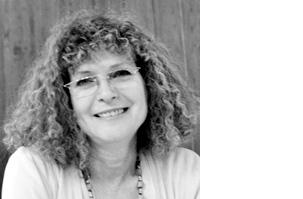
Professor, Sociology and Anthropology
Christine Jourdan received her Ph.D. in Linguistics and Anthropology in 1987 from the Research School of Pacific Studies at the Australian National University and joined Concordia in 1991. Her work focuses on theories of cultural and social change, on the pidginization and creolization of languages, on the linguistic representation of cultural knowledge and practice, on language ideology and on changing food practices in Québec and in the Pacific. She has published books and articles on Solomon Islands Pijin, urbanization in the Pacific, and socio-cultural creolization. She is the author of two books, the co-editor of Language, Culture and Society (Cambridge University Press) and 4 scholarly anthologies, has published articles in English and French in journals such as Language in Society, Journal de la Société des Océanistes, Annual Review of Anthropology, Anthropologie et Sociétés, Culture as well as in many book collections. She is currently writing a book on the anthropology of pidgin and creole languages (Cambridge University Press) and researching a book on the transformations of food practices and ideologies in Quebec.

INDI PhD Candidate
Alexandra Kenefick is an INDI PhD candidate whose work challenges patriarchal paradigms in design by establishing a feminist, more-than-human approach to making-with diverse voices, perspectives, species, and praxes. Making/Meat/Matter uses such an approach to expose inequities found in contemporary animal production/consumption systems by prodding at the tangled and messy relationships humans contend with meat consumption. By recognizing the intimate subtleties, personal narratives, and situated experiences that further one’s decisions to eat or not to eat other animals as salient qualities toward mindful consumption patterns, her work explores how individual consumers can become capable of response, and agents in the collective redesigning of destructive systems and their embedded injustices.
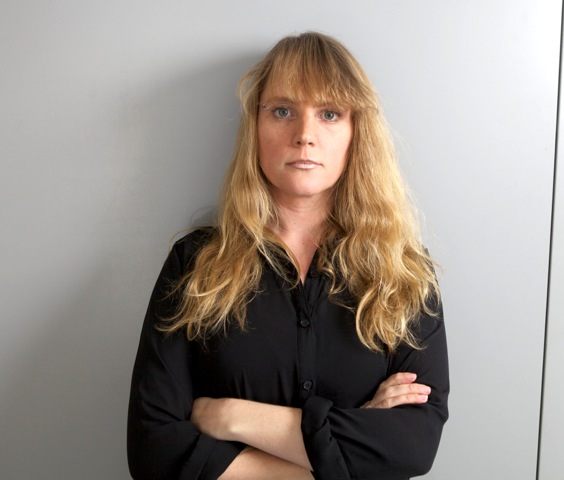
PhD Student, INDI Program
Pamela Tudge is a PhD student in Concordia University’s Individualized Program, an adjunct professor in the faculty of Fine Arts, and an active member of Milieux Institute for Arts, Culture and Technology. Pamela’s research areas include design activism, new media art and history with food-based social movements as a thread that runs through these disciplines. Her current research employs material- and media-based practices to explore understandings of domestic food practices and space, which investigate different interpretations of between food and waste creation. She has done work in the areas of food studies, geographic information systems, environmental science, new media, and social movements. Pamela has an interdisciplinary MA from the University of British Columbia and a BA in geography and environmental studies from the University of Victoria.
She teaches We Are What We Eat, a food and culture course that examines contemporary food practices through research-creation–style projects. The course, takes an interdisciplinary approach to understanding food creation and consumption, including the arts practices of design, performance art, architecture and media art history. Students have the opportunity to create food dishes from food studies topics and creatively write, draw or make media on the weekly questions.



